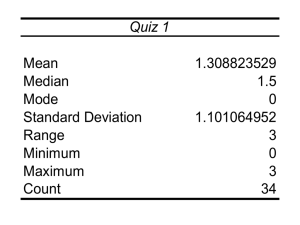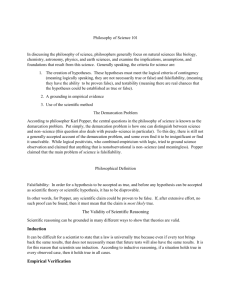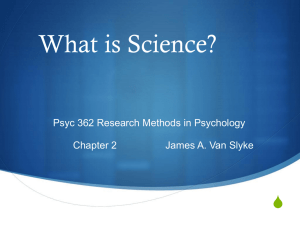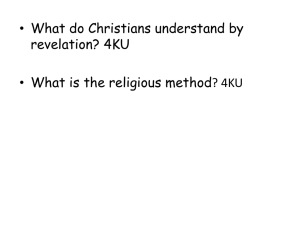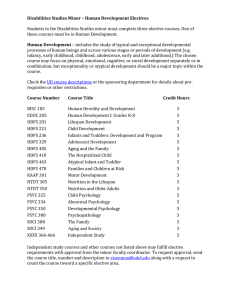Literature Review
advertisement
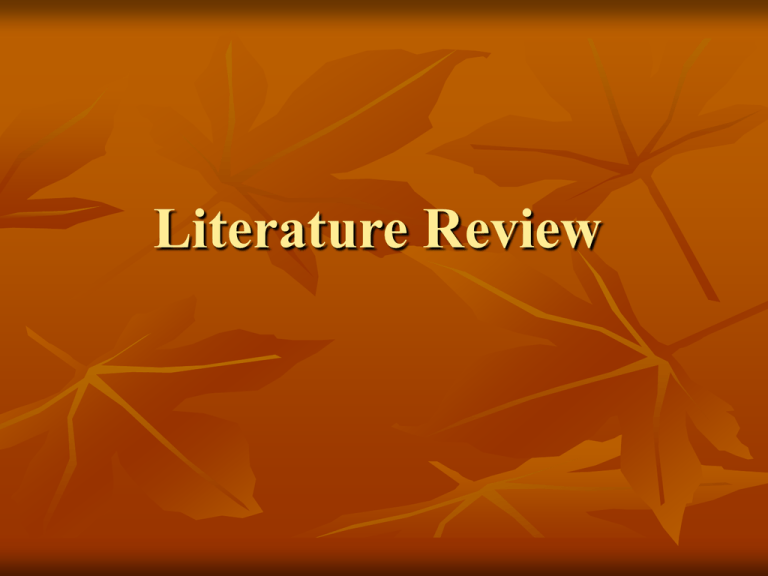
Literature Review Theory and Research: Three Models The theory before research model Ideas-Theory-Design Study-Data CollectionAnalysis-Findings-Ideas Works where there is a well-developed knowledge base and strong theories. You think you know the answer before you gather any data. You gather data to “test” your answer. You have an idea and you look to a theory that suggests an explanation/solution. Theory and Research: Three Models The research before theory model Ideas-Design Study-Data Collection-TheoryAnalysis-Findings-Ideas Works where there is neither a well-developed knowledge base nor strong theories. You need to look to the data to obtain an answer. Your theory come from what you learn as you gather data. You have an idea and you design a way to collect data and after that you develop a theory. Theory and Research: Three Models The Spiraling Research Approach Ideas Don’t try to memorize all the directions Point is there is a huge amount of feedback Theory Design Data Collecti on Analysis Findings Working Model for Research IdeasLiterature ReviewDesignData CollectionAnalysis & FindingsDissemination Begin with ideas, Check relevant literature for more ideas and theories, Use these to generate a research question or researchable foci (hypothesis if appropriate), Design study, collect data, etc. Reviewing the Literature Idea gives you an initial interest—male college student drinking. Genearte an initial question trying to focus interest—What is relationship between college and male drinking? Begin library review. Libraries are all different and Internet makes more and more information available electronically. OSU Library Resources (lab) Reviewing the Literature Go beyond your library with internet searches such as google. May find programs that are related to your topic. Many good articles may not show up on the internet. Ask for a reference library to help you search the library. Literature Review Evaluating Web sites Whose web site? —names can be extremely misleading. Search for information on the site itself. “Friends of Diversity” may be a group opposed to diversity. What is the date of material? —often hard to know. Web sites may not be deleted when they are abandoned. Can information be collaborated? Literature Review You may have a computerized information retrieval system to use. A word document is a simple approach with One page for each quotation, finding, etc. Use quotation marks or something when it is a direct quote and page numbers. Put key word or topic at top of page. Uses example on page 25 as a model. A list of complete references at the end of the file Include citations from earlier pages in the references. Literature Review The most basic system is a two card method. Using 4 x 6 cards. Author Card (see page 24) has formal reference. Include authors, date, title, publication, page numbers, and where you got it (web page, library call number). Include more than you think you need. Might list key words relevant to your question Subject Card (see page 25) and what is in Word document. 4 x 6 cards are easy to shuffle/organize Literature Review The written literature review is like a funnel. Start with the general area of interest—general idea. Get more and more focused on your specific research question. The last paragraph or two of the literature review should give you specific research question/hypothesis. Research Hypothesis Sometimes you have a specific hypothesis. At the least, an hypothesis requires and independent and dependent variable and what you expect their relationship to be. An hypothesis is most common where there are well developed theories and extensive research. Research Question More often, you have a research question. The literature review leads to this question as what needs to be investigated. We know a lot about diversity, but very little about gender diversity in female dominated fields and why men are rare in these fields. Nobody has done a systematic study of this in an HDFS department. Our question is why are there so few men in HDFS and what could HDFS do to change this.
